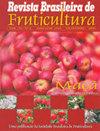埃及条件下几种枣树雄性基因型的表型多样性评价
IF 0.9
4区 农林科学
Q4 HORTICULTURE
引用次数: 1
摘要
人工授粉是棕榈树实现充足产量的先决条件;因此,鉴定优质雄棕榈树作为枣椰树种植者的标准花粉源具有高度的优先性。本研究旨在评估Hayani、Meghal、Fardh和Ghannami Ahmer四个枣椰树雄性的表型多样性。利用棕榈营养和生殖部分(叶、小叶、棘和芽)的18个定量形态学参数,研究了棕榈基因型之间的遗传多样性和系统发育关系。采用主成分分析和分层聚类分析来确定所研究基因型之间的异同点。结果表明,4株雄棕榈树的形态参数存在显著差异。所选形态参数大部分可作为鉴定枣树雄性基因型的定量标记。主成分分析表明,研究参数构成了两组主要的同质变量,这两组变量在研究枣树雄性表型多样性中占有较高的比例。聚类分析表明,Fardh、Ghannami Ahmer和Meghal的亲缘关系比Hayani亲缘关系更近;Ghannami和Fardh雄性遗传相似度最高,而Hayani和Ghannami Ahmer雄性遗传相似度最低。本文章由计算机程序翻译,如有差异,请以英文原文为准。
Assessment of phenotypic diversity of some date palm male genotypes growing under Egyptian conditions
Abstract Artificial pollination is a prerequisite to achieve a sufficient yield of palm trees; hence the identification of superior male palm trees as a standard pollen source for date palm growers has a high priority. The current study was carried out to assess phenotypic diversity among four date palm males namely Hayani, Meghal, Fardh, and Ghannami Ahmer. The genetic diversity and phylogenetic relationships between palm genotypes were performed using eighteen quantitative morphological parameters of both vegetative and reproductive parts (leaf, leaflets, spines, and spathe). Principal components analysis and hierarchical clustering was performed to identify the differences and similarities between the studied genotypes. Results showed significant differences in morphological parameters between the four male palm trees. Most of the selected morphological parameters could be used as quantitative markers for the identification of date palm male genotypes. Principal component analysis showed that, the studied parameters formed two major homogeneous groups of variables, which possessed a high proportion of the observed phenotypic diversity among the studied date palm males. Cluster analysis showed that Fardh, Ghannami Ahmer, and Meghal, are closer related than Hayani; Ghannami and Fardh males showed the highest genetic similarity while the lowest similarity index was detected between Hayani and Ghannami Ahmer males.
求助全文
通过发布文献求助,成功后即可免费获取论文全文。
去求助
来源期刊
CiteScore
1.50
自引率
20.00%
发文量
34
审稿时长
4-8 weeks
期刊介绍:
The Revista Brasileira de Fruticultura (RBF) publishes technical articles and scientific communications in the area of fruit crops, referring to results of original searches and unpublished papers in Portuguese, Spanish or English, and 1 or 2 reviews per edition, of invited authors.

 求助内容:
求助内容: 应助结果提醒方式:
应助结果提醒方式:


